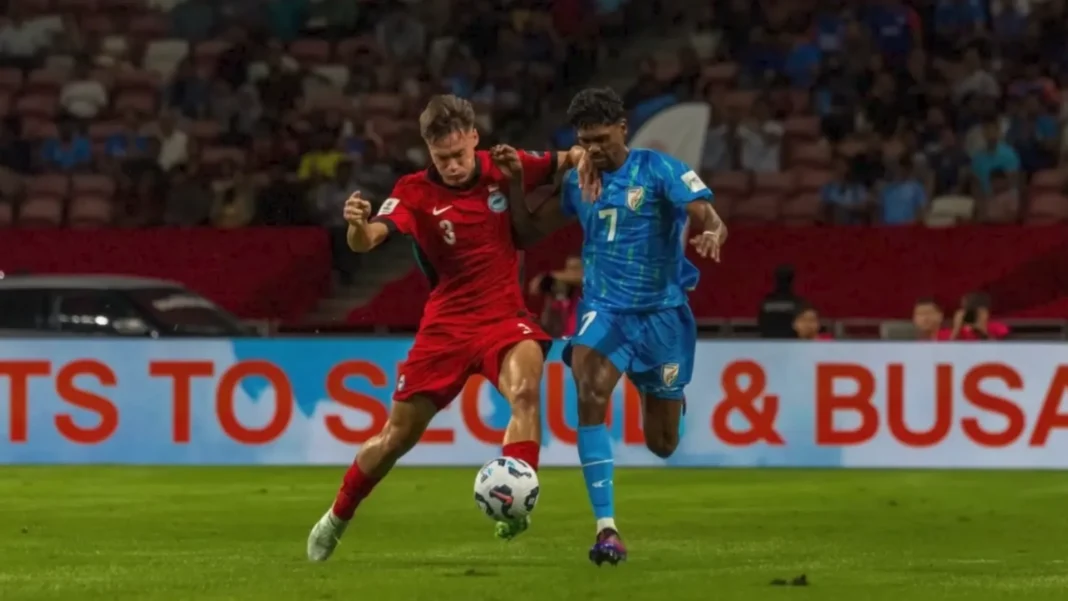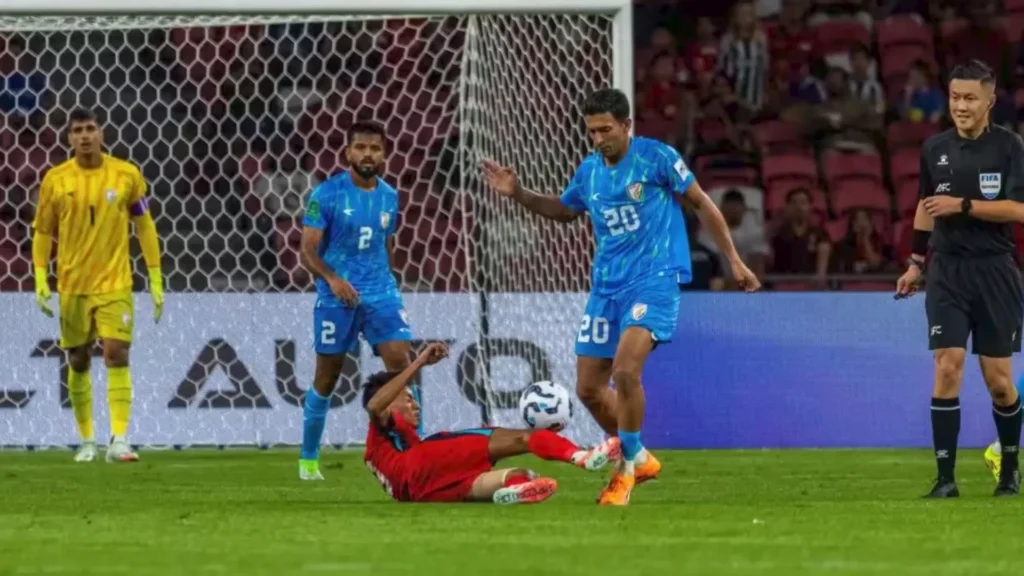Looking at the match analysis, India was lucky to escape with a draw against Singapore. Singapore played better and clearly deserved the win. Despite performing well at their home ground, the National Stadium in Kallang, they ended up with just one point. Considering Singapore’s strong display, India’s draw feels more like a win.
Qualification Scenario for India
India managed draws against Singapore and Bangladesh but lost to Hong Kong. In the Bangladesh vs Hong Kong match, Bangladesh led at halftime, but Hong Kong scored an injury-time winner to go top with 7 points.
To qualify directly for the AFC Asia Cup, India must finish first in the group. Their next match is against Singapore on their home turf, and they need to win all remaining games.
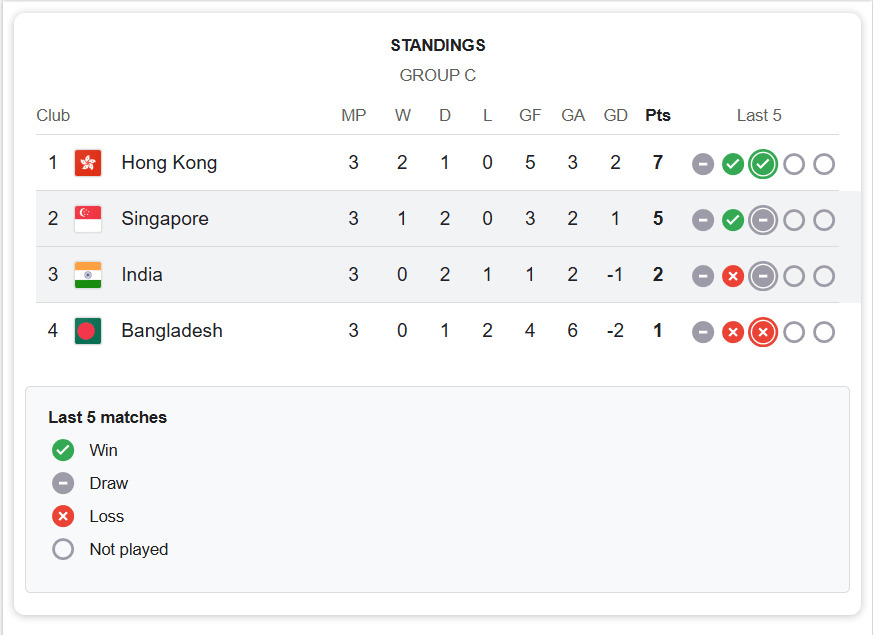
Can India still qualify? Mathematically, yes, but they must beat Singapore, Bangladesh, and Hong Kong — and hope their rivals drop points.
Questions on the starting lineup
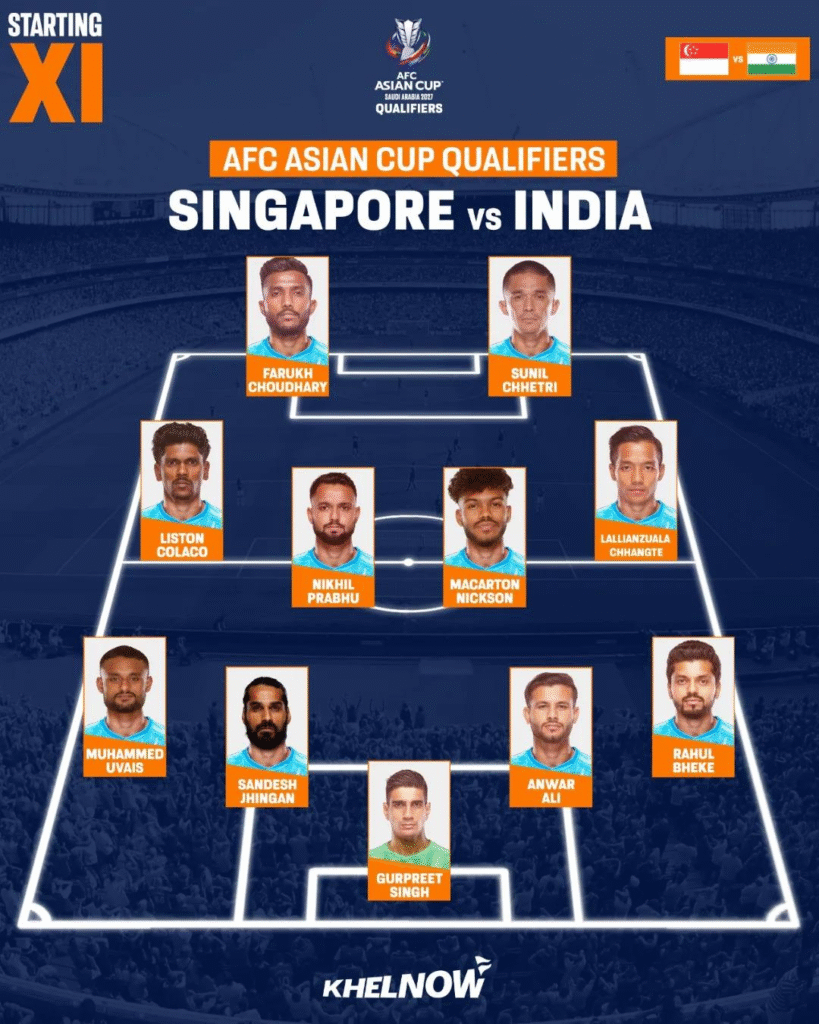
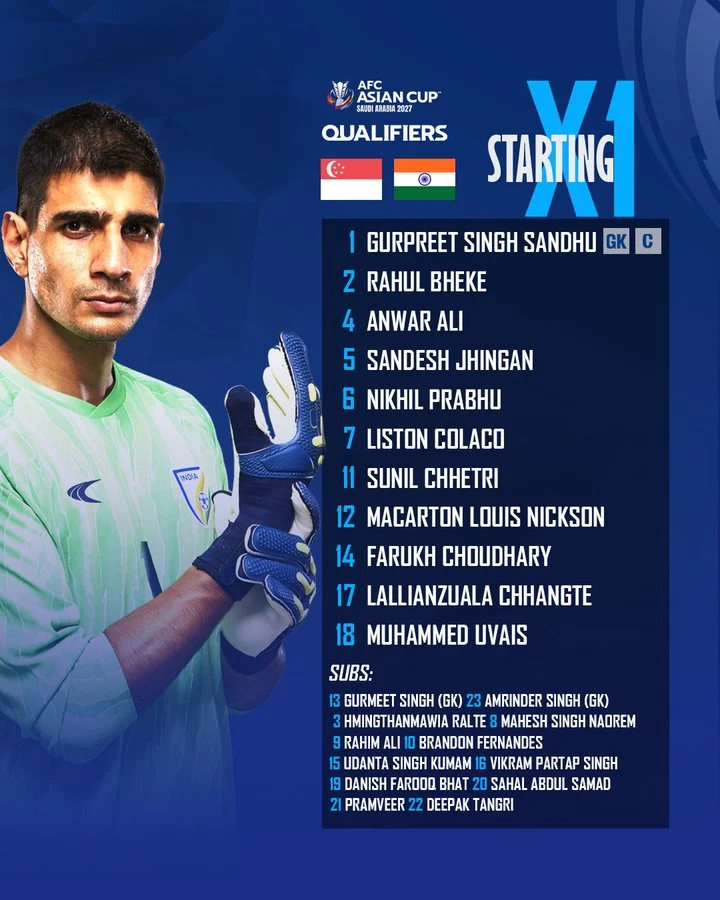
Talking about the selection, there were a few misses. Jiten didn’t play, which was a big loss for India, and Mahesh Singh Naorem’s exclusion from the starting XI was debatable.
Liston Colaco underperformed, and keeping him on for the full 90 minutes was questionable. He misjudged timing, space, and momentum throughout the match, often passing in the opposite direction of his forwards’ runs. Even a player like Kylian Mbappé, with his incredible pace, couldn’t have reached those passes.
I have questioned in my video as to why Sahal Abdul Samad and Brandon Fernandez were left out of the starting midfield.
India plays an infamous style known as Haraam Ball or Anti-Football. In this system, when defending deep, teams must exploit the 6–7 second transition after winning the ball with quick vertical passes. That requires dynamic midfielders — yet Sahal and Brandon didn’t start.
Once Sahal came on, he changed the game, adding the quality India lacked. He’s press-resistant and capable of unlocking defenses.
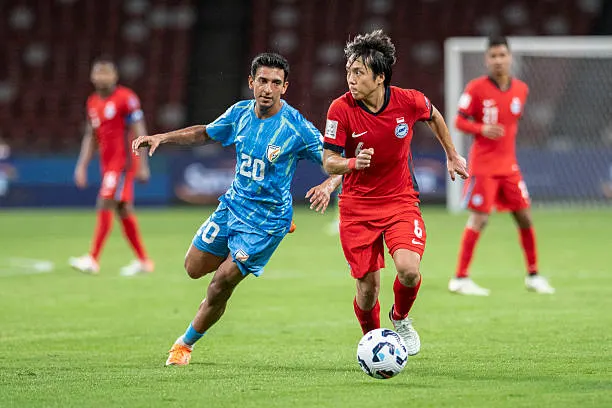
Tactical Analysis
Defending
India started poorly in defense, mistiming tackles and showing a lack of discipline. Sandesh Jhingan earned an early yellow for a reckless flying tackle near the halfway line — unnecessary and irresponsible for such an experienced player. In the 47th minute, another careless challenge brought his second yellow, reducing India to ten men.
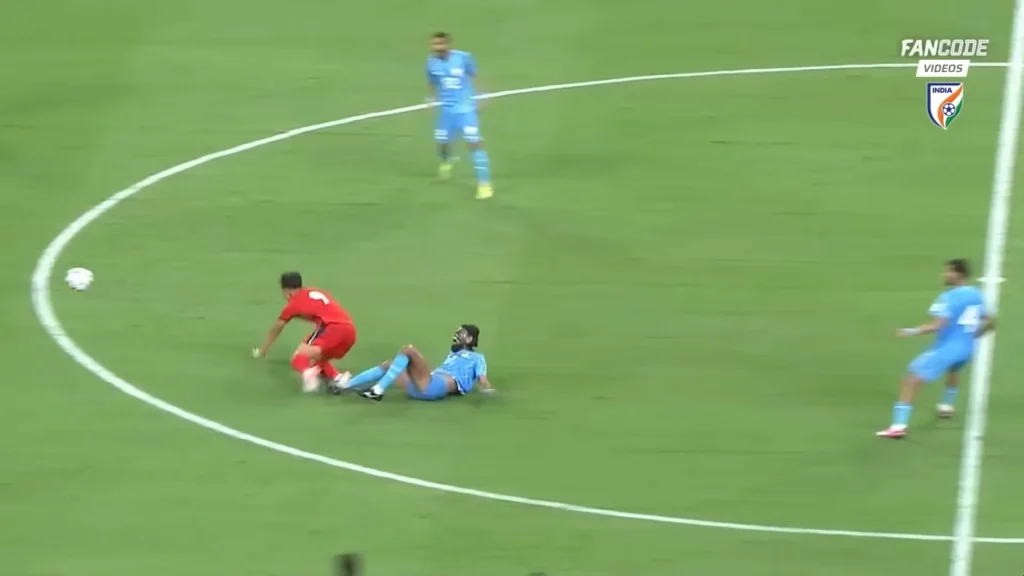
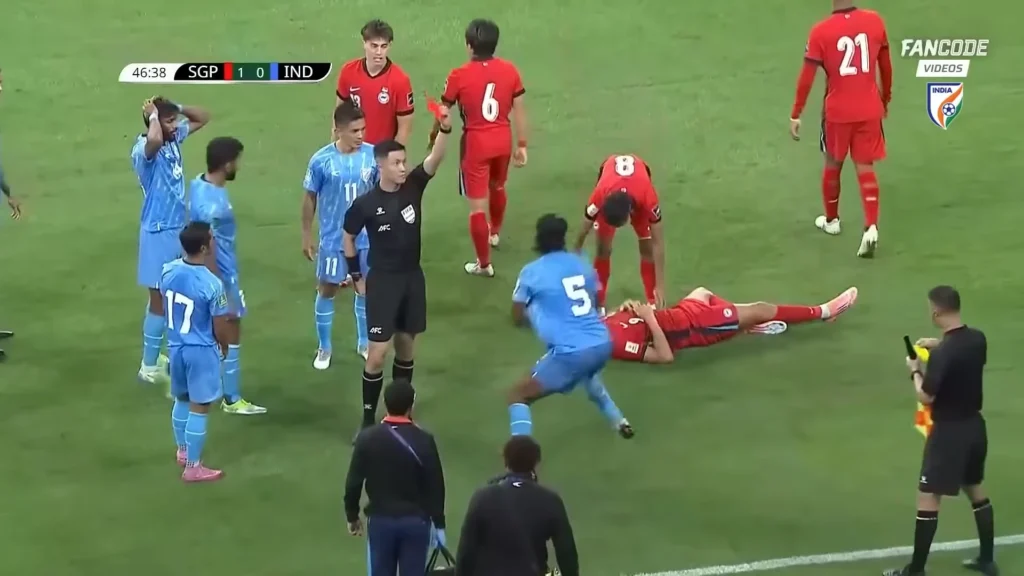
Even before the red card, India’s defense looked shaky, but surprisingly, the team defended better with ten men. They showed more energy and intensity, determined to limit damage and finish respectably.
Overall, India’s defending was below par, saved only by a few solid moments from Anwar Ali, Rahul Bheke, and especially Gurpreet Singh, whose saves prevented a heavier defeat. Without him, India might have conceded two or three more goals.
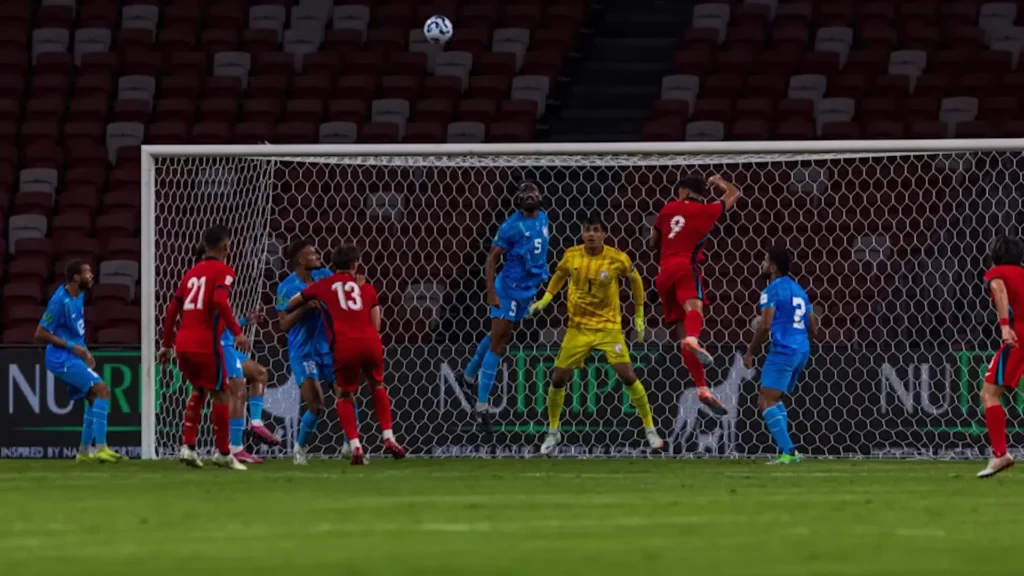
India was really lucky on some occasions, as Singapore wasn’t able to convert goals.
India defended desperately, not necessarily well.
Many times, also in previous videos, I have explained that there’s a big difference between good defending and simply blocking goals at all costs. Still, the team’s best moment came in the final 45 minutes, holding firm with ten men to keep hopes alive and secure a 1–1 draw.
The best thing in today’s match was that we voraciously defended well for 45 minutes with a man down.
Midfield
The midfield plays multiple roles for both attack and defense. Midfielders must block lanes and intercept passes to disrupt the opponent’s play.
However, India’s midfield looked disorganized, disorganized, and was exposed several times. The forwards pressed out of sync, forcing midfielders to compensate. This was evident when Nikhil Prabhu or Macarton often pressed Singapore’s defensive midfielder Hariss Harun, leaving gaps behind them.
The midfield also needs to deliver line-breaking passes to the forwards, but with Brandon and Sahal absent, that creativity was missing. Nikhil Prabhu occasionally managed such passes and effectively chased, defended, and marked his opponents.
Macarton, being young, made some errors that allowed Singapore to regain control and retreat when they had to defend.
Singapore has quality OCI players of Japanese and Korean players like Song Ui-Young, Kyoga Nakamura, who were successfully breaking the lines. And they were therefore able to make many chances.
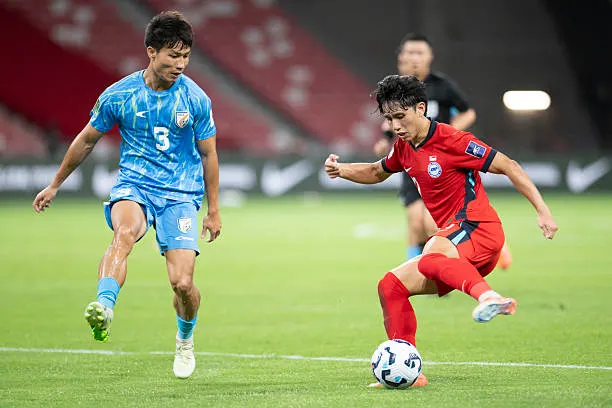
Attacking
India struggled to score despite several mistakes from Singapore’s backline. Singapore looked overconfident at times, and their errors created chances that briefly made the match interesting.
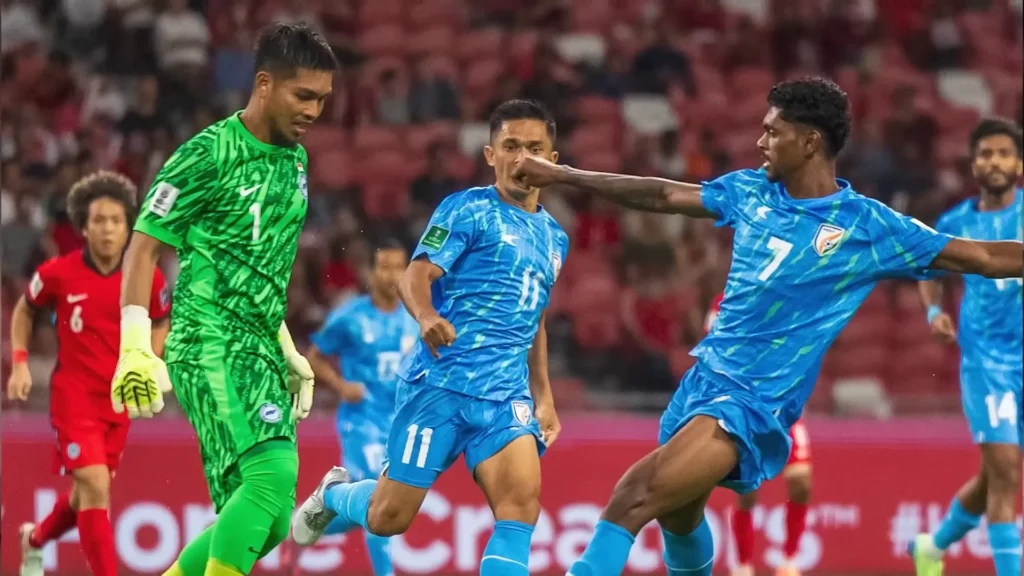
Singapore’s pacey players dominated duels against Liston Colaco, while Chhangte also failed to impress. In my video as well, I had raised my concerns with Liston getting the full 90 minutes despite not being in his best form.
Their defenders and goalkeeper Izwan Mahbud repeatedly misplaced passes, but India couldn’t stay clinical enough to punish those errors.
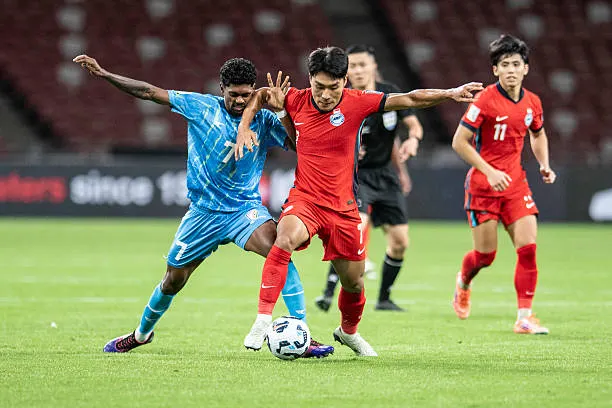
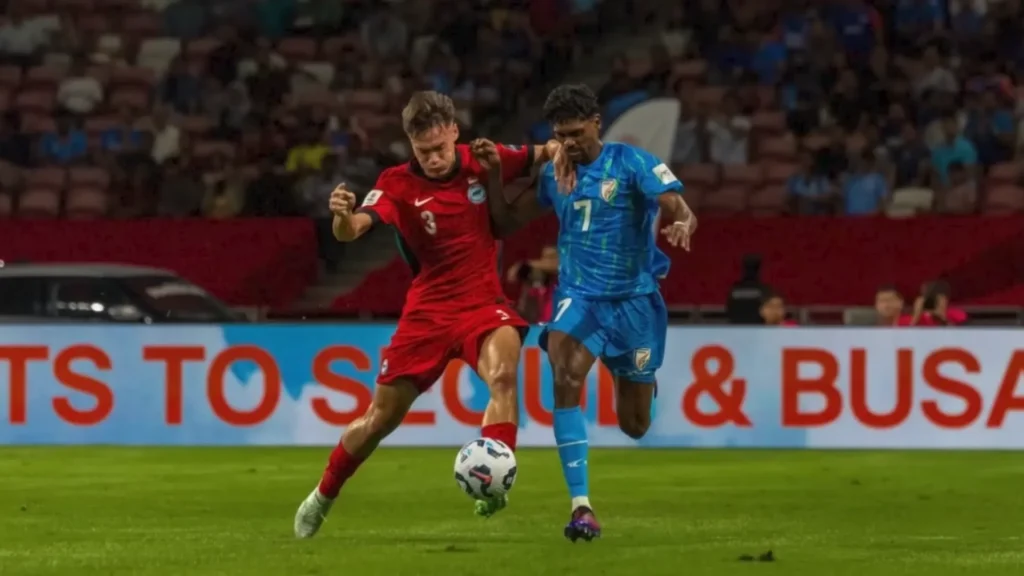
The lack of finishing also reflected poorly on the team’s attack and highlighted India’s dependence on Sunil Chhetri. Even at 41, he gave his best after coming out of retirement — a reminder that India still lacks a striker of his caliber. Rahim Ali eventually scored, capitalizing on a gift from the Singapore keeper.
How many shots does India make on target? In fact, the only memorable shot from Indian forwards came in the 90th minute, when Rahim Ali’s strike salvaged a draw for India.
Setpieces
Set pieces, free kicks, and throw-ins become crucial when a team is a man down and struggling to create chances.
In the 60th minute, India earned a vital free kick on the right edge of the penalty box — a narrow-angle opportunity. Liston Colaco, mimicking Cristiano Ronaldo’s stance, struck the ball straight into a defender in Singapore’s wall. Why didn’t he chip or curl it into the box to create danger?
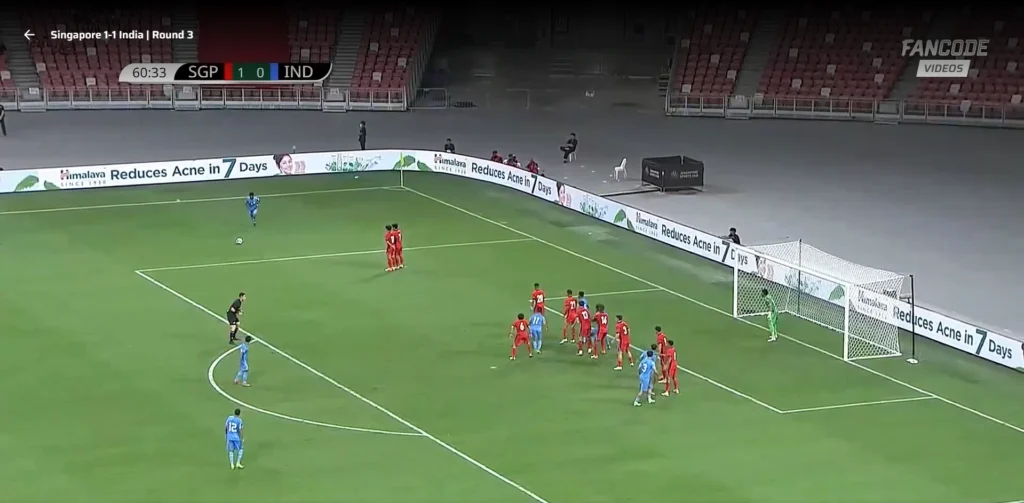
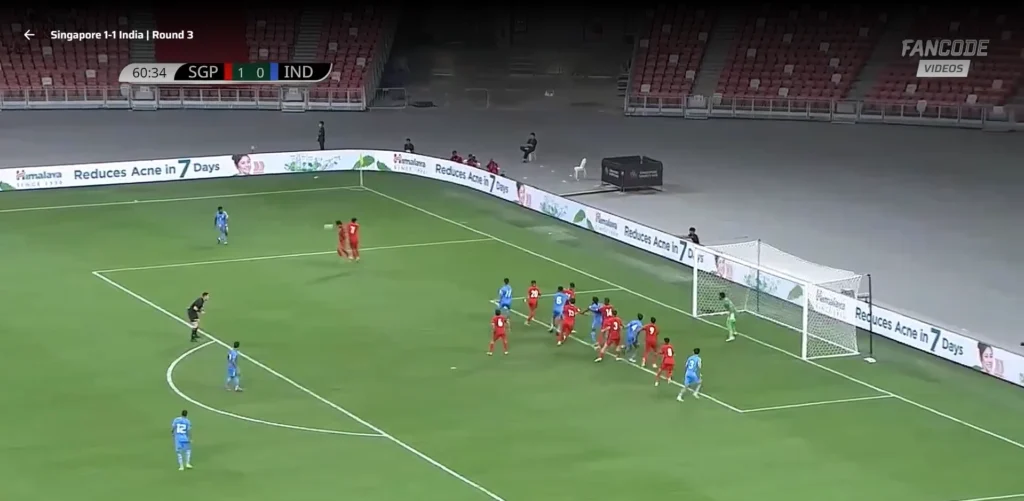
Questions quickly arose: why was Liston taking set pieces? Why weren’t Sahal or Brandon brought on for it? And if substitution wasn’t possible, why didn’t Anwar Ali, Rahul Bheke, or Sunil Chhetri step up instead?
India’s style of play and its cons
India typically plays an infamous style of football, which is called Anti Ball / Haraam Ball, with a 4-4-1-1 formation.
As I have explained in my video, in this, the opposition team attacks, and we defend strategically. Here, defending does not imply that we have to defend only in our 12-yard box. Defending starts from 2 forwards. But the pressing of 1-1 (forwards) in a 4-4-1-1 formation is questionable and hard to understand. Who will put a press shadow on the forward? As discussed earlier, this creates pressure on the midfield as pressing by our forwards was disorganized.
One of the main principles of Anti Football style is that when the opposition is at its weakest, we will initiate a counterattack. If we read any famous footballing principles book, it clearly explains that when the opposition team loses the ball, there is a gap of 5 to 6 seconds, which is most crucial for the defending team. It is because the opposition is playing possession football, and their players are dragged out. Their body orientation is at different angles.
During these 5,6 seconds, the opposition has to reshape itself to a defending position. Opposition changes body orientation and tracks back their run. They are most vulnerable at this moment. So to initiate the counter, India played runners like Changte and Liston Colaco. Upfront, Farukh and Sunil Chhetri played, who were responsible for the hold-up play or winning the aerial duels.
But how many successful counterattacks did India do? Hardly any. So India didn’t execute the tactics of their playing style well.
Final thoughts
India didn’t play good football. Singapore was a better team in all the departments. India’s starting 11 was not up to the mark. Useful substitutions were not made at the correct time. The red card given to Sandesh compelled us to play more defensively. Khalid Jamil should make the right selections for the upcoming matches so that India can stay in contention to qualify.

